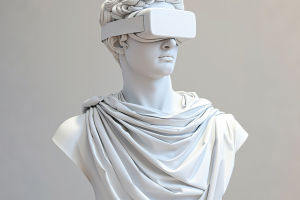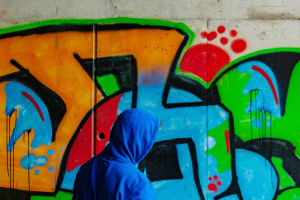We often talk about how fashion can transform us, but have you ever thought about how the clothes we wear affect our mindset, emotions, and how others perceive us?
Fashion isn't just about looking good — it's a powerful tool in shaping our psychological state and communicating our personality without saying a word.
Colors, styles, and fabric choices all have a psychological impact that can either lift our mood or make us feel less confident. In this article, we'll dive into how different colors and styles influence our emotions and the impression we leave on others.
The Power of Color: More Than Just Visual Appeal
Color is a critical element in the psychology of fashion. It's one of the first things people notice when they see us, and it has the ability to instantly evoke emotions, shape moods, and even influence our behavior. Whether we realize it or not, the color of our clothing can directly affect how we feel and how we are perceived by others.
For example, the color red is often associated with power, confidence, and passion. It's a color that commands attention and exudes energy. When we wear red, we may feel more assertive and self-assured. On the other hand, wearing blue — particularly darker shades — is linked to calmness, trustworthiness, and professionalism. We may notice that we feel more grounded and composed in a blue outfit, and others may view us as more dependable and competent.
Colors like yellow are known for boosting mood and energy. It's often associated with optimism, warmth, and happiness. However, too much yellow might create feelings of anxiety or restlessness, so it's essential to strike the right balance. Green, on the other hand, symbolizes growth, balance, and harmony, creating a sense of calmness and stability. This color choice can make us feel more relaxed and connected to nature.
Styles That Speak: Clothing as a Reflection of Personality
Beyond color, the style and cut of our clothing can play a significant role in shaping how we feel about ourselves and how others perceive us. The way we dress can reflect our mood, confidence, and the message we want to convey to the world. For example, wearing structured, tailored clothing often conveys professionalism, control, and authority. A sharp suit or blazer can give us an immediate boost in self-esteem, making us feel ready to take on anything.
On the other hand, loose, flowing garments — like oversized sweaters or bohemian dresses — may evoke a sense of freedom, creativity, and relaxed confidence. These outfits can help us feel more at ease and less bound by societal expectations. The fit and shape of our clothing also influence how others view our personality. Someone in a relaxed outfit may be perceived as easy-going, approachable, and friendly, while a person in more polished attire may be seen as serious, refined, or even distant.
The Influence of Fabric: Comfort and Mood
We often choose fabrics based on aesthetics or practicality, but the texture and feel of the fabric we wear also play a role in shaping our psychological state. Soft, comfortable fabrics like cotton, cashmere, or silk can make us feel relaxed, cozy, and at ease. When we wear clothes that feel good on our skin, we tend to exude confidence and comfort, which influences how others perceive us.
In contrast, stiff, structured fabrics like leather or wool may make us feel more assertive or even slightly restrained. These fabrics are often associated with strength and durability, giving off a bold, no-nonsense vibe. The tactile experience of different materials can impact our mood — when we feel comfortable, we're more likely to project confidence and feel more at ease in our social interactions.
How Others Perceive Us: The Psychology of First Impressions
When we think about fashion, it's easy to focus on how it makes us feel. But the clothes we wear also communicate a lot to those around us. First impressions are often formed within seconds, and what we wear plays a huge role in that split-second judgment.
Research from the Journal of Fashion Marketing and Management (2013) confirms that clothing has a measurable influence on first impressions, affecting perceptions of professionalism, credibility, and even likability. We may not be aware of it, but the style, color, and fit of our clothing immediately influence how others interpret our personality, social status, and even our emotional state.
For instance, a person wearing a black dress might be perceived as sophisticated and elegant, while someone in casual jeans and a t-shirt might appear more approachable and laid-back. Our clothing sends a message about our lifestyle and social role. For example, bright colors and bold prints may make us seem more extroverted and fun-loving, while neutral tones and classic styles suggest introversion, thoughtfulness, and professionalism.
Fashion as a Confidence Booster
Understanding the psychological impact of clothing is also a way for us to use fashion as a tool for building confidence. When we wear clothes that make us feel good and reflect our personality, it's easier to project a positive image and feel empowered in our daily lives. By choosing colors and styles that resonate with our emotions and sense of self, we can boost our confidence and feel more comfortable in our own skin.
For example, when we need to make an important presentation or attend a job interview, wearing a color or style that boosts our self-esteem can improve our performance and leave a lasting impression. Similarly, when we're feeling low or need a mood boost, opting for a color like red or yellow can instantly lift our spirits.
Conclusion: Fashion is More Than Skin Deep
Fashion is a powerful form of self-expression, but it's also deeply intertwined with our emotions and psychology. From the colors we choose to the styles we wear, clothing has the ability to influence how we feel and how others perceive us. By understanding the psychological effects of different fashion elements, we can use clothing to elevate our mood, project confidence, and communicate our personality to the world.
So, next time you choose an outfit, consider how it might make you feel and what kind of impression it might create. After all, fashion is not just about looking good — it's about feeling good and expressing who we truly are.
What do you think? Do certain colors or styles affect your mood? Let us know in the comments below!


